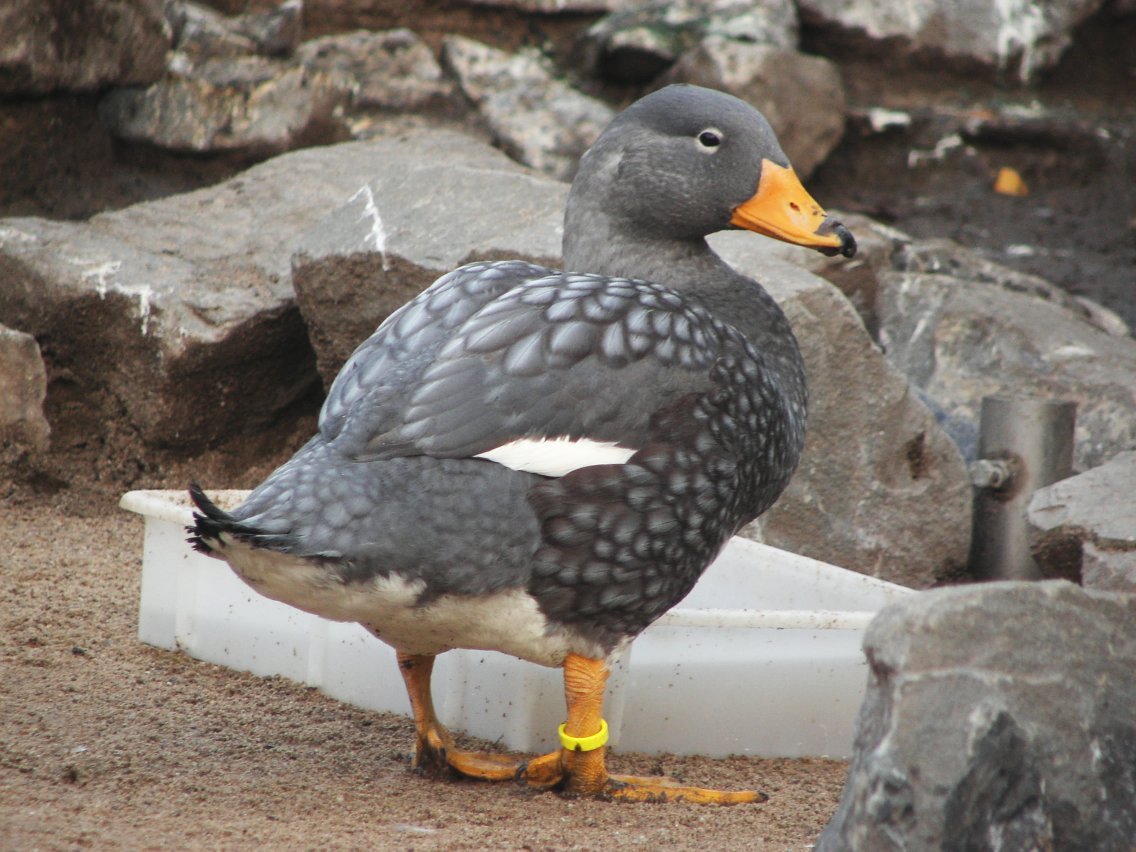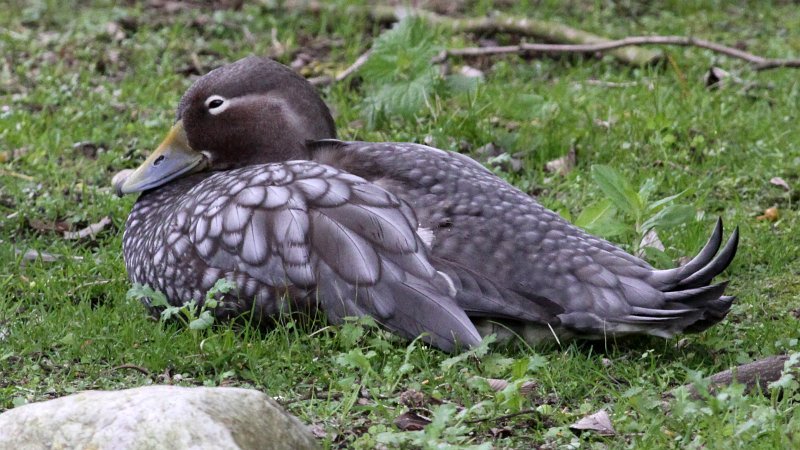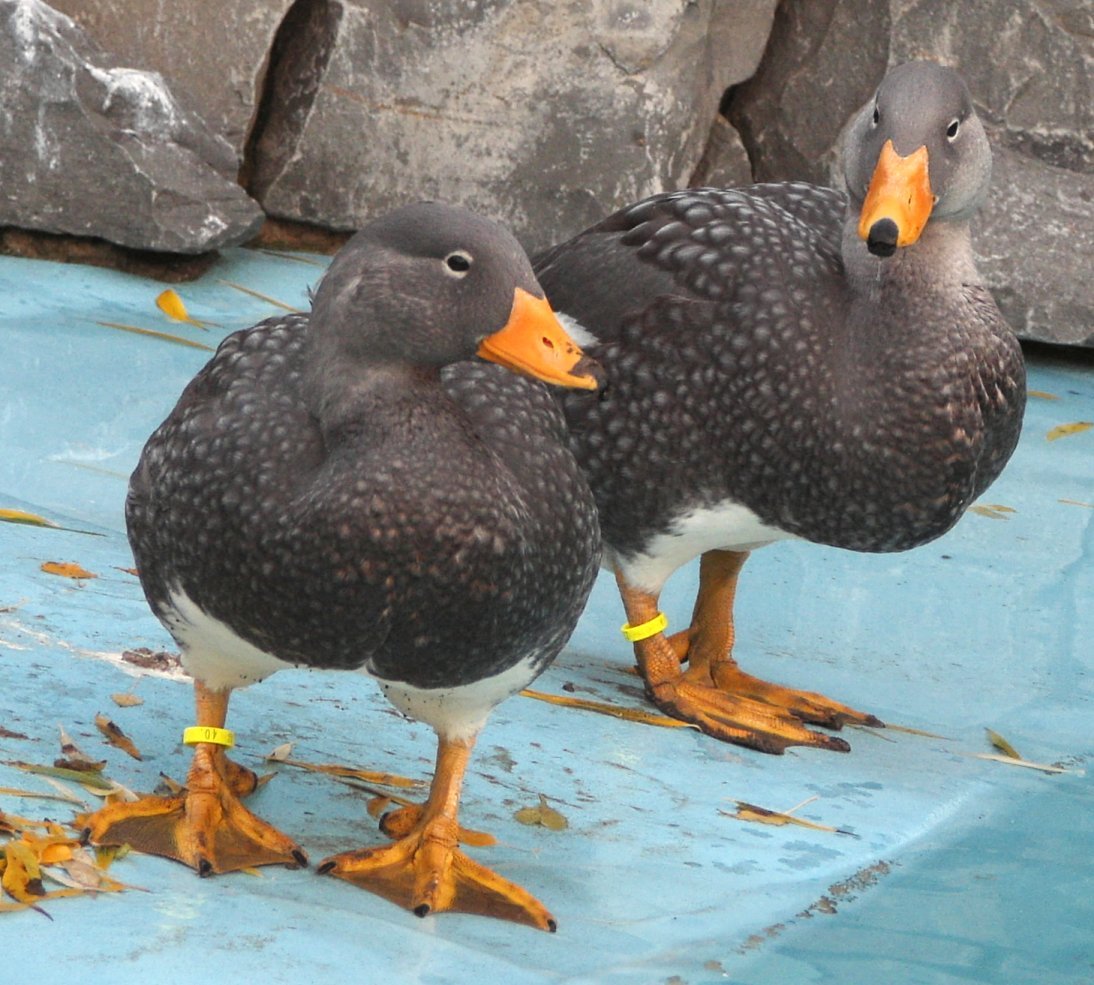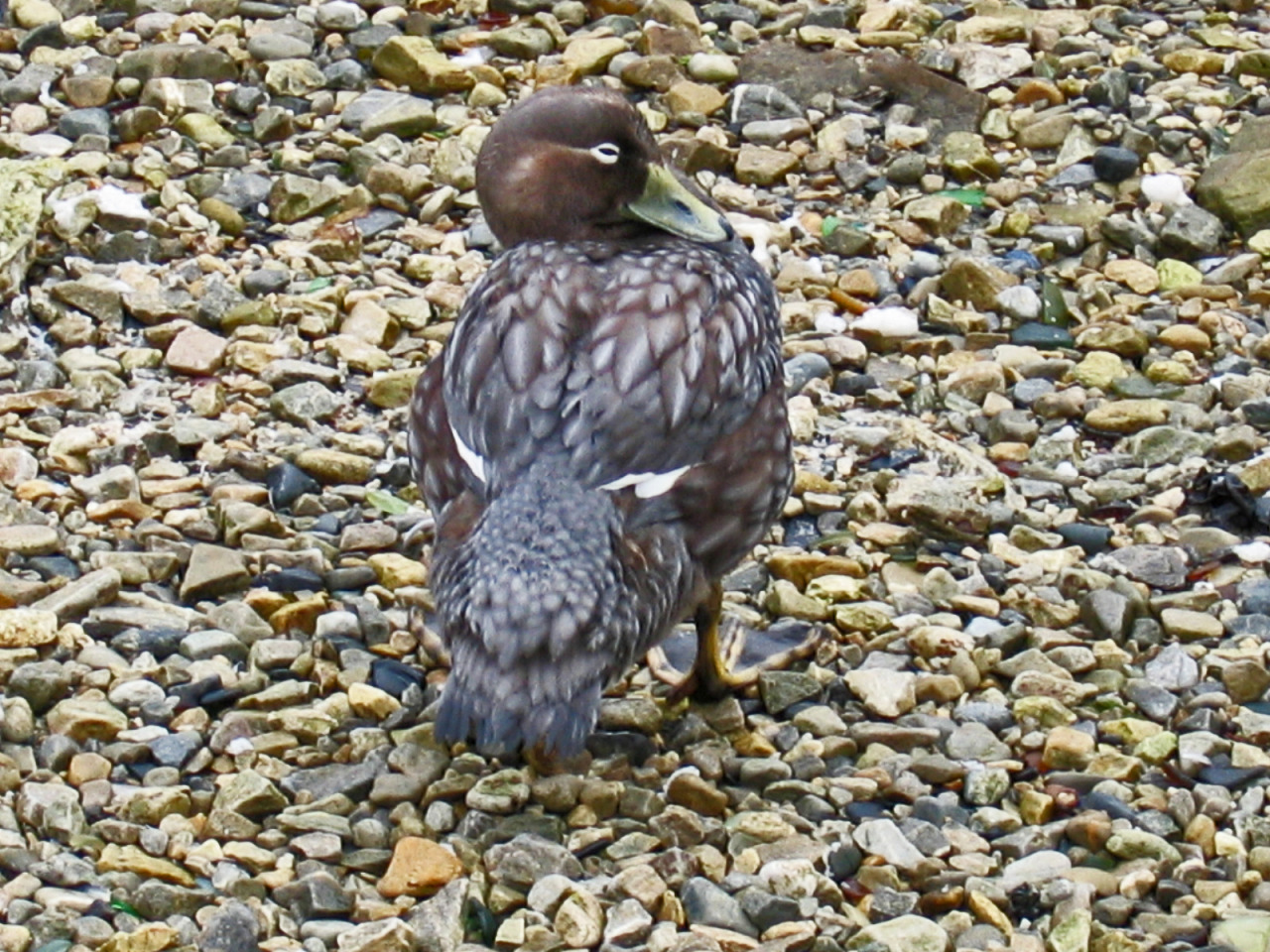Tachyeres

Fuegian Steamer Duck by Sarefo, CC BY-SA 3.0
Name: Tachyeres
Status: Extant
First Described: 1875
Described By: Owen
Classification: Dinosauria, Saurischia, Eusaurischia, Theropoda, Neotheropoda, Averostra, Tetanurae, Orionides, Avetheropoda, Coelurosauria, Tyrannoraptora, Maniraptoriformes, Maniraptora, Pennaraptora, Paraves, Eumaniraptora, Averaptora, Avialae, Euavialae, Avebrevicauda, Pygostylia, Ornithothoraces, Euornithes, Ornithuromorpha, Ornithurae, Neornithes, Neognathae, Galloanserae, Anseriformes, Anseres, Anatoidea, Anatidae
Referred Species: T. patachonicus (Flying Steamer Duck, Extant), T. pteneres (Fuegian Steamer Duck, Extant), T. brachypterus (Chubut Steamer Duck, Extant), T. brachypterus (Falkland Steamer Duck)
Tachyeres is a genus known as the Steamer Ducks, a group of southern ducks that are probably most closely related to the dabbling ducks, but are traditionally grouped with the Shelducks, so more research is needed to solve the mystery. They swim very fast in the water by flapping their wings as well as using their feet, making them into paddle steamers in the water. They are fairly aggressive birds and blood-filled battles between steamer ducks over territory is known, and they can kill waterbirds much larger than they.

Flying Steamer Duck by Ken Billington
T. patachonicus, the Flying Steamer Duck, is a nonthreatened species known from Chile, Argentina, Tierra del Fuego, and the Falkland Islands - the most widespread Steamer Duck. It looks very similar to the other three species in terms of plumage, but it is unique not only in range - it’s the only Steamer Duck that can fly, and the only one found on inland fresh water!

Fuegian Steamer Duck by Sarefo, CC BY_SA 3.0
T. pteneres, the Fuegian Steamer Duck, is also not currently threatened with extinction, known only from the rocky coasts and islands of southern Chile and Tierra del Fuego. They do move inland to sheltered bays and lakes during the breeding season. They ducks enjoy water obscured by dense vegetation, or even abandoned penguin nests, during the nesting season. THe parents drive their young away after fledging, and the adult males are extremely aggressive during the mating season. They feed their young snails, insect larvae, and isopods, so they aren’t entirely hostile to their young or anything. This is the most noticeably aggressive of the species in this genus, with one individual known to kill an entire flock of other waterfowl with its spurred wings. They are fairly large birds, weighing up to 7 kilograms, with dark brown and white spotted feathers.

Chubut Steamer Duck by Chucao, CC BY-SA 3.0
T. leucocephalus, the Chubut Steamer Duck, is the only species of this genus threatened with extinction, in fact, considered vulnerable to extinction. They have white heads, distinct from other Steamer Ducks, and they live primarily in Argentina and the San Matías Gulf. They feed on molluscs and crustaceans, which they gather through diving, upending, and dabbling. These are flightless ducks, which primarily breed during October to February, densley packing their nests together on the coastline. They usual nest in bays or inlets with calmer conditions, where the chicks can easily forage for food after hatching. These birds are threatened most actively with oil exploration, habitat destruciton, predators, and invasive species. They are flightless, so predators pose a unique threat, as they need to escape via swimming, driving, and steaming. Right now, there are programs in the works to protect these ducks from large ships.

Falkland Steamer Duck by Pismire, CC BY-SA 3.0
Finally, the Falkland Steamer Duck, T. brachypterus, is our last Steamer Duck species, and not currently threatened with extinction. It is one of two birds endemic to the Falkland Islands. They have very short wings and are, thus, Flightless, and is very similar in appearance to the Flying Steamer Duck.
Buy the author a coffee: http://ko-fi.com/kulindadromeus
Source:
https://en.wikipedia.org/wiki/Steamer_duck
https://en.wikipedia.org/wiki/Flying_steamer_duck
https://en.wikipedia.org/wiki/Fuegian_steamer_duck













